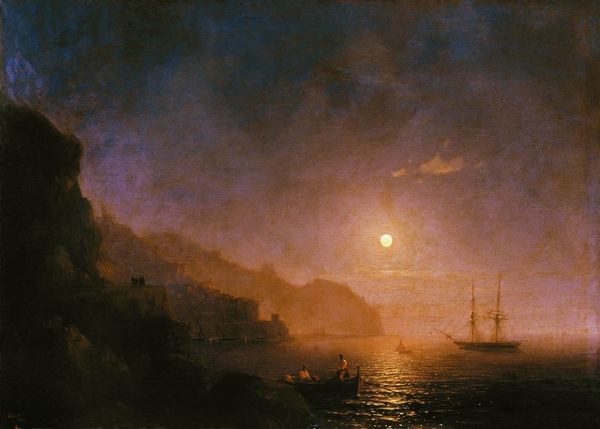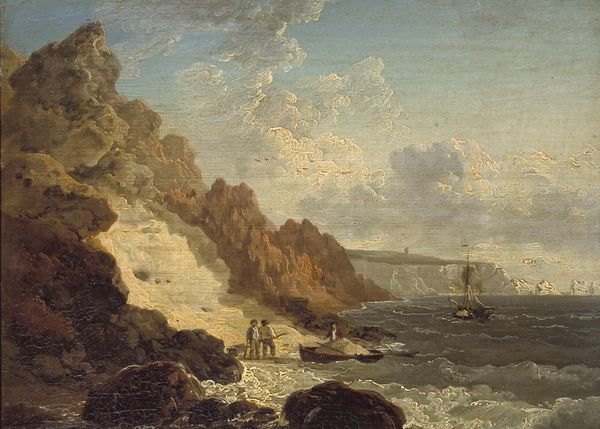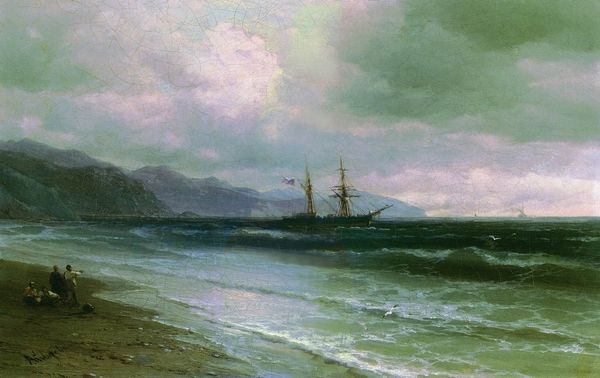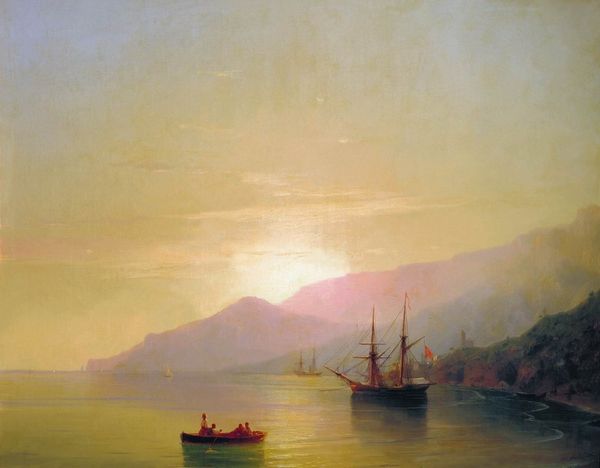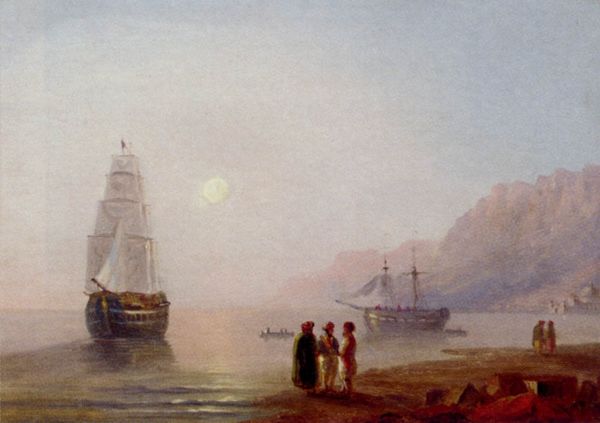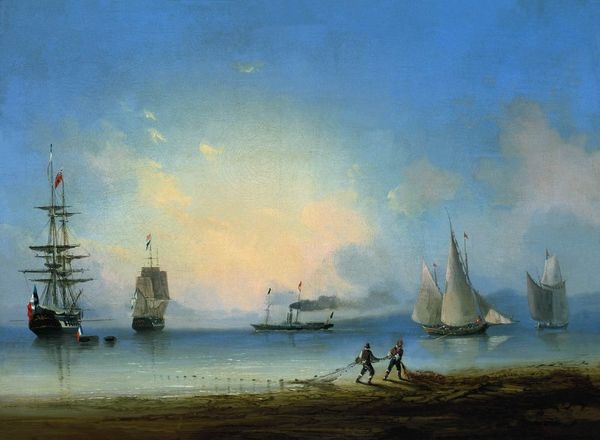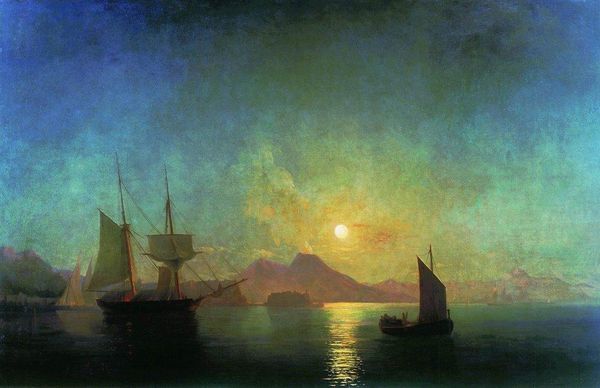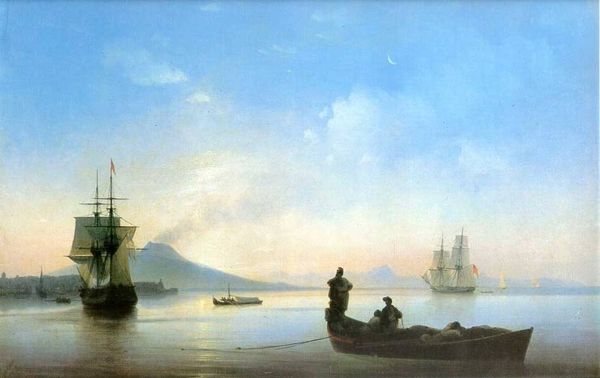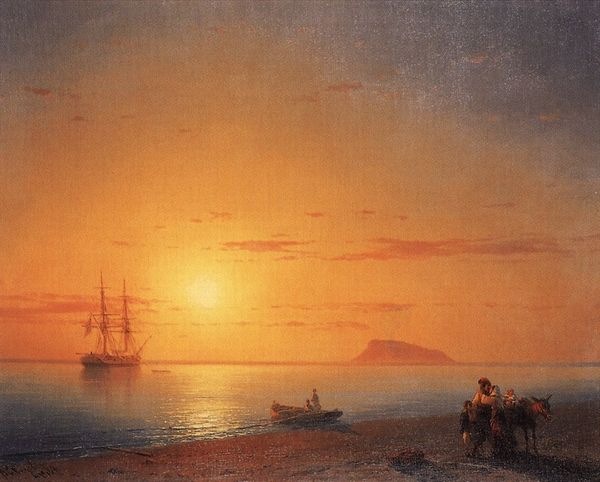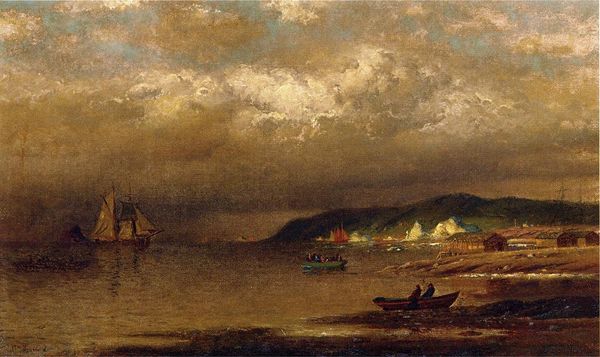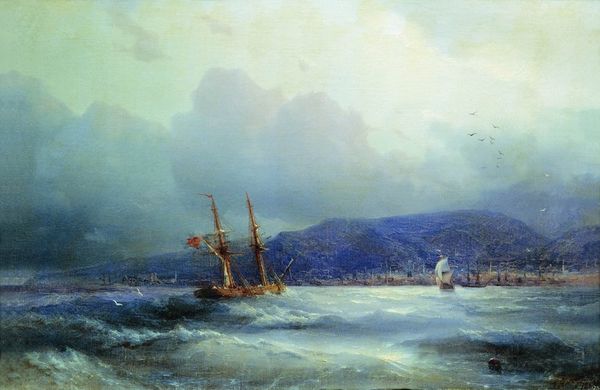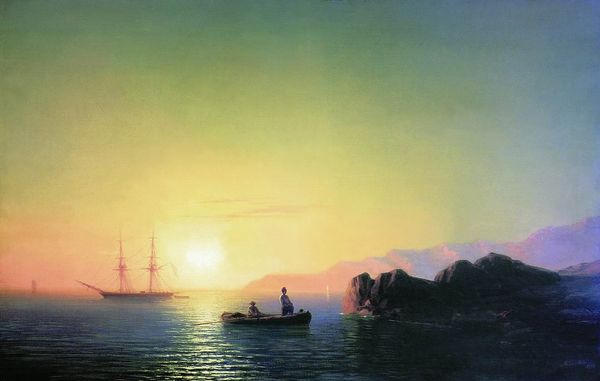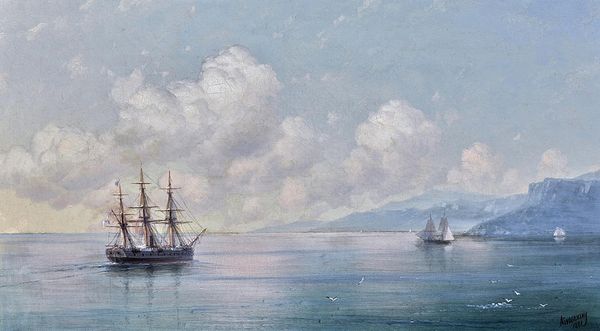
Copyright: Public domain
Curator: It's so peaceful, isn’t it? The stillness of the water, that golden light. A very picturesque scene. Editor: Indeed. This is William Bradford’s "Coast of Labrador," painted in 1870. Bradford was known for his Arctic scenes, documenting expeditions and whaling voyages. Curator: Whaling, yes. That does shift my perception slightly. Suddenly that lonely boat on the shore takes on a different significance. What was the economic and cultural impact of these whaling expeditions on the Inuit communities? How did they participate, resist, or get caught in the crossfire? Editor: Precisely. The romantic depiction often obscures the harsh realities and complex relationships involved. Bradford capitalized on a fascination with the Arctic, but his paintings also become documents of a specific moment of cultural exchange, and often, exploitation. Look at how the composition minimizes the Indigenous presence. Curator: True. We see a solitary structure on the coast, seemingly a trading post near the shore. But the focus remains resolutely on the dramatic sky and the untouched wilderness—very much in line with Romantic ideals of the sublime. It prompts the question of whose narrative dominates and who is marginalized in these landscapes. Editor: Exactly. The sublime in Romantic art often functioned to overshadow the social and political realities. How does this idealization serve colonial interests? It encourages us to critically examine these representations and deconstruct them to reveal what’s absent and what power dynamics are in play. Curator: It's fascinating how an initially serene image opens up so many complex layers when viewed through different lenses. It urges us to not only appreciate the aesthetic skill, but also the power of art to reflect and sometimes distort history. Editor: And how we, as viewers, carry the responsibility to unpack those distortions and understand the complete, often uncomfortable, narrative.
Comments
No comments
Be the first to comment and join the conversation on the ultimate creative platform.
